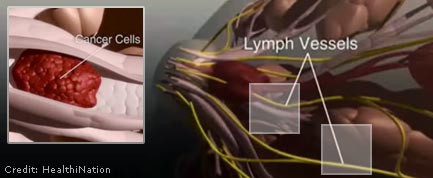Radiation After Mastectomy Useful in Some Cases

For some breast cancer patients, radiation therapy after mastectomy reduces the risk of recurrence by almost 30 percent and increase their five-year overall survival by almost 50 percent, a new study finds.
Surgery and radiation are common methods for treating early-stage breast cancer and preventing recurrences. While several studies have been done on the routine use of postmastectomy radiation therapy (PMRT) in breast cancer patients with larger tumors and four or more positive lymph nodes, the role of PMRT for smaller tumors with one to three positive lymph nodes (T1-2 N1) is not known.
Researchers retroactively studied 544 patients with T1-2 N1 invasive breast cancer who were treated with modified radical mastectomybetween April 1991 and December 2005. Of the patients, 383 did not receive radiation therapy and 161 did.
Radiation therapy reduced the risk of recurrence in patients who were younger than 40 years old, T2 stage, high nuclear grade, had negative estrogen receptor status and hadpresence of lymphovascular invasion from 40 percent to 12.5 percent andincreased the overall survival of T1-2 N1 breast cancer patients with negative estrogen receptor status and presence of lymphovascular invasion from 43.7 percent to 87.1 percent.
"Even though the study sample size was small, we feel that the results are compelling," Po Sheng Yang, M.D., a physician in the Sun Yat-Sen Cancer Center Department of Surgery in Taipei, Taiwan, and lead author of the study, said. "Based on this study, we strongly suggest that radiation therapy be used after mastectomy for this particular group of breast cancer patients."
The findings are detailed in the June 1 issue of the International Journalof Radiation Oncology*Biology*Physics, the journal of the American Society for Radiation Oncology.
Get the world’s most fascinating discoveries delivered straight to your inbox.



